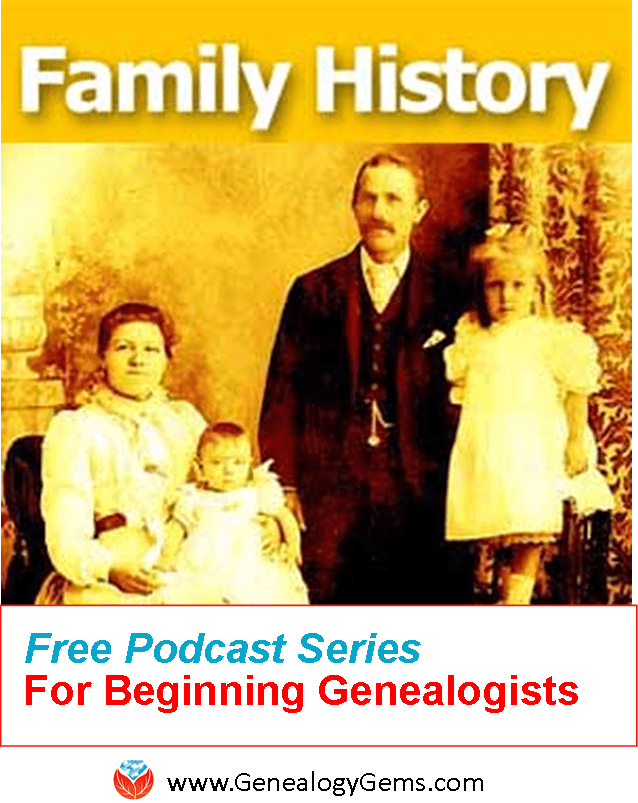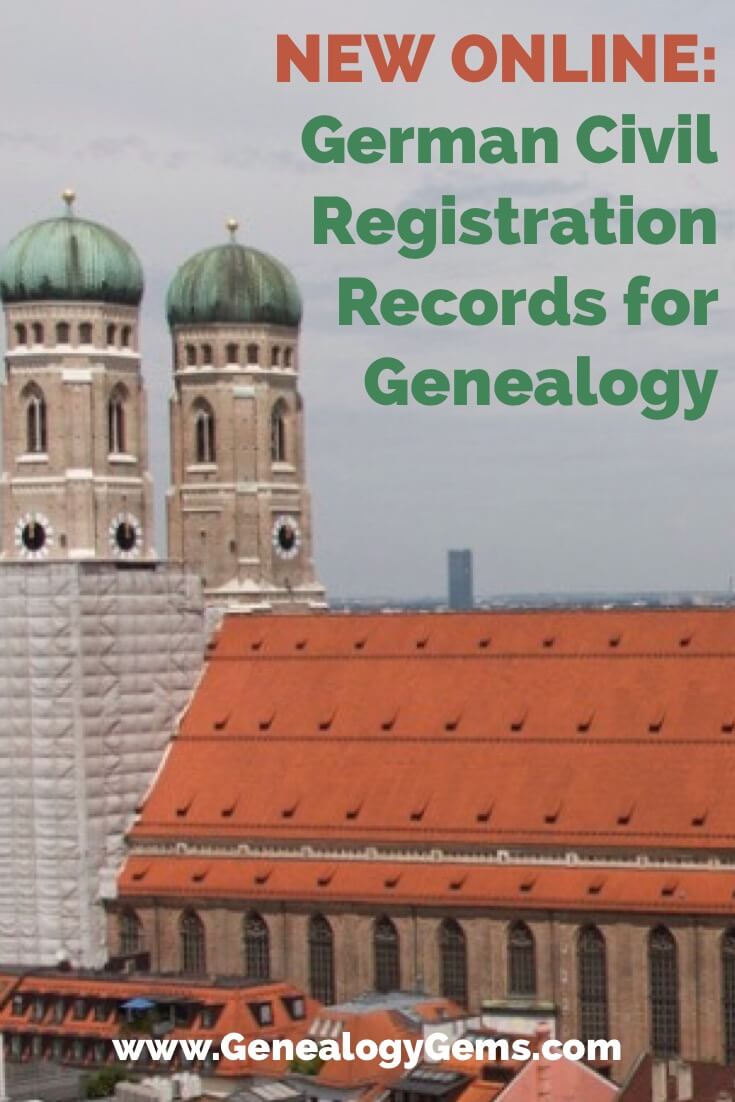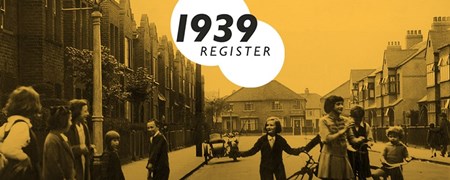Blog

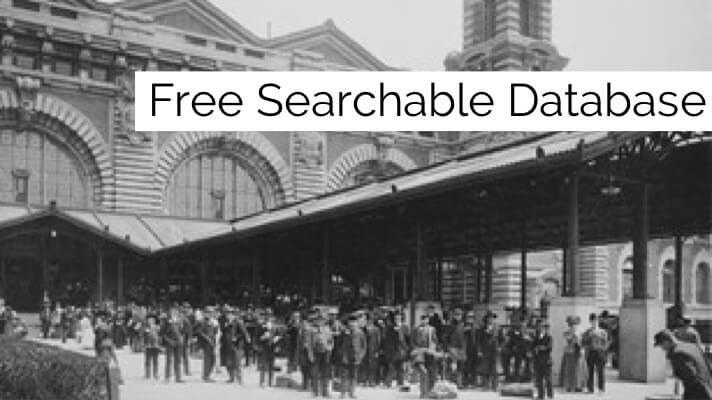
All Ellis Island Passenger Records Now Free on FamilySearch
All Ellis Island passenger records are now available and free to search at FamilySearch.org! It’s one of 8 free fresh FamilySearch collections profiled in this article. You’ll also find: New Jersey brides, France vital records, Northumberland parish records, Palermo and Chieti (Italy) civil registrations, Maryland funeral homes and the 1905 New York state census.
Ellis Island Passenger Records All On FamilySearch
Over 100 million Americans have ancestors who immigrated through Ellis Island or one of its predecessor immigration stations. Now the entire collection of Ellis Island New York Passenger Arrival Lists from 1820 to 1957 are available online on both FamilySearch and The Statue of Liberty – Ellis Island website, giving researchers even more options for discovering immigration records.
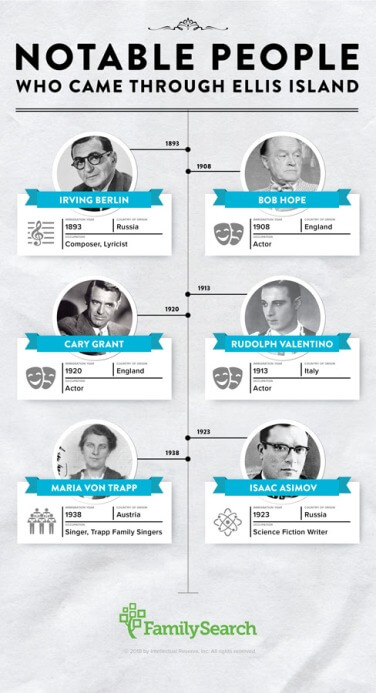
According to a FamilySearch release, “Originally preserved on microfilm, 9.3 million images of historical New York passenger records spanning 130 years were digitized and indexed in a massive effort by 165,590 online FamilySearch volunteers. The result is a free searchable online database containing 63.7 million names, including immigrants, crew, and other passengers traveling to and from the United States through the nation’s largest port of entry.”
Searching on FamilySearch (in addition to or instead of the Ellis Island site) takes advantage of advanced searching tools on the site and the ability to attach records to profiles in the FamilySearch Family Tree. FamilySearch has divided these records into three collections that represent three phases of migration history:
- New York Passenger Lists (Castle Garden) 1820-1891
- New York Passenger Arrival Lists (Ellis Island) 1892-1924
- New York, New York Passenger and Crew Lists 1925-1957
“The ship manifests list passengers, their names, age, last place of residence, who is sponsoring them in America, the port of departure, and their date of arrival in New York Harbor and sometimes other interesting information, such as how much money they carried on them, number of bags, and where on the ship they resided during its sail from overseas.”
More FamilySearch additions
England. Upwards of a million records have been added to FamilySearch’s existing collection, England, Northumberland, Parish Registers, 1538-1950. These are “Church of England parish registers containing baptisms, marriages, and burials that took place in the county of Northumberland from 1538 to 1950. Records may include: name, parents, spouse, father’s occupation, residence, date of birth, date of marriage, burial date and place and much more depending on the record type. The original records are held at the Woodhorn Museum and Northumberland Archives.”
France. Over 50,000 indexed names have been added to an existing collection of France, Vital Records, 1542-1900. These include “various birth, marriage and death records indexed by Bibliothèque Généalogique et d’Histoire Sociale de France.”
Italy. FamilySearch has made two major additions to its unique online collection of free Italian civil registration records. A new browse-only collection, Italy, Palermo, Civil Registration (State Archive), 1820-1947, contains over 4.3 million images. Also, over 3.2 million images have been added to the existing collection, Italy, Chieti, Civil Registration (State Archive), 1809-1930. Available records vary by time and locale but may include civil registrations of births, marriages, and deaths; marriage banns; ten-year indexes; residency records and supplemental documents.
United States – Maryland. Over 4,000 records have been added to the collection, Maryland, Baltimore, Lock Funeral Home Records, 1936-2007. Available documents for deceased persons vary but may include death certificates, ledgers, obituaries, and miscellaneous loose papers, filled with rich genealogical information about the deceased and their relatives.
United States—New Jersey. A new collection, New Jersey, Bride Index, 1930-1938, contains nearly 240,000 indexed names. It was acquired by ReclaimTheRecords.org and donated to FamilySearch for publishing of images.
United States—New York. Over 130,000 indexed records have been added to the free-to-search New York State Census, 1905 at FamilySearch. This is a key resource for those with Empire States roots in the early 20th century, given the enormous immigrant and migrant population in New York and the general lack of public access to New York vital records.
Learn more about Ellis Island Immigration records
Learn everything you need to know about using Ellis Island immigration records in 3 special episodes in the free Family History: Genealogy Made Easy Podcast!
- Episode 29: Immigration and Naturalization Records for Family History, Part 1. Learn about passenger arrival lists in the U.S., the little-known certificates of arrival and naturalization records: how to find them and what’s in them.
- Episode 30: Immigration and Naturalization Records for Family History, Part 2. Passenger departure records created in European ports and more in-depth exploration of U.S. naturalization records.
- Episode 31: Immigration and Naturalization Records for Family History, Part 3. Learn about those mysterious scribbled annotations on passenger list annotations and the immigrant’s experience at Ellis Island.

About the Author: Sunny Morton
Sunny is a Contributing Editor at Lisa Louise Cooke’s Genealogy Gems; her voice is often heard on the Genealogy Gems Podcast and Premium Podcasts. She’s known for her expertise on the world’s biggest family history websites (she’s the author of Genealogy Giants: Comparing the 4 Major Websites); writing personal and family histories (she also wrote Story of My Life: A Workbook for Preserving Your Legacy); and sharing her favorite reads for the Genealogy Gems Book Club.
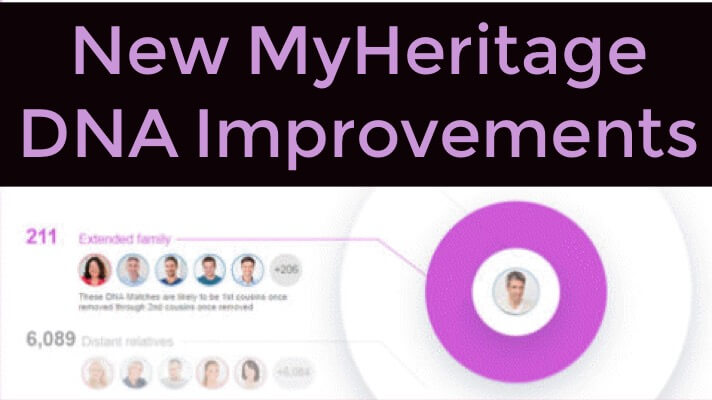
Improvements to MyHeritage DNA
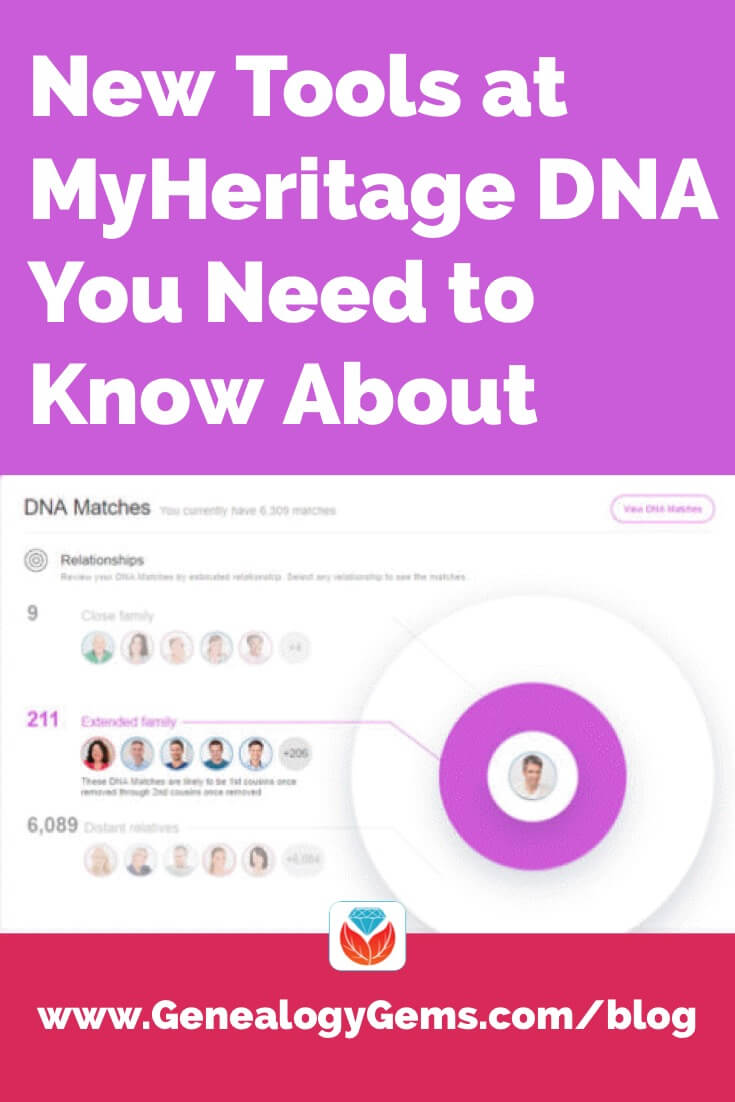 You’ve taken your DNA test for genealogy and anxiously waited for your results. When they arrive, you dive into the ethnicity pie chart. Then matches start rolling in and it can become a little overwhelming to make sense of it all and the benefit it can provide to your genealogy.
You’ve taken your DNA test for genealogy and anxiously waited for your results. When they arrive, you dive into the ethnicity pie chart. Then matches start rolling in and it can become a little overwhelming to make sense of it all and the benefit it can provide to your genealogy.
Thankfully the DNA testing companies are not only focused on advances in testing, but also in creating tools that make it easier for you to interpret and use your results.
MyHeritage DNA continues to release improvements to their DNA product that are meant to both enhance our experience with their website and make it easier to do our genetic genealogy work. You’ll also find an improved presentation of your genetic information that makes it easier to share with your relatives.
The MyHeritage DNA Overview Tab
Just recently MyHeritage DNA announced the addition of new filters for their match page and a bit of a redesign. The small redesign includes moving the ethnicity estimate into a tab right next to the DNA matches tab, as well as adding an Overview tab.
For any relatives who you have convinced to test, but who only show a passing interest in the actual genetic genealogy research, this Overview tab is a great way to show them their results without overwhelming them. There is a simple rundown of the ethnicity results, and then matches are broken up by relationship level and location.
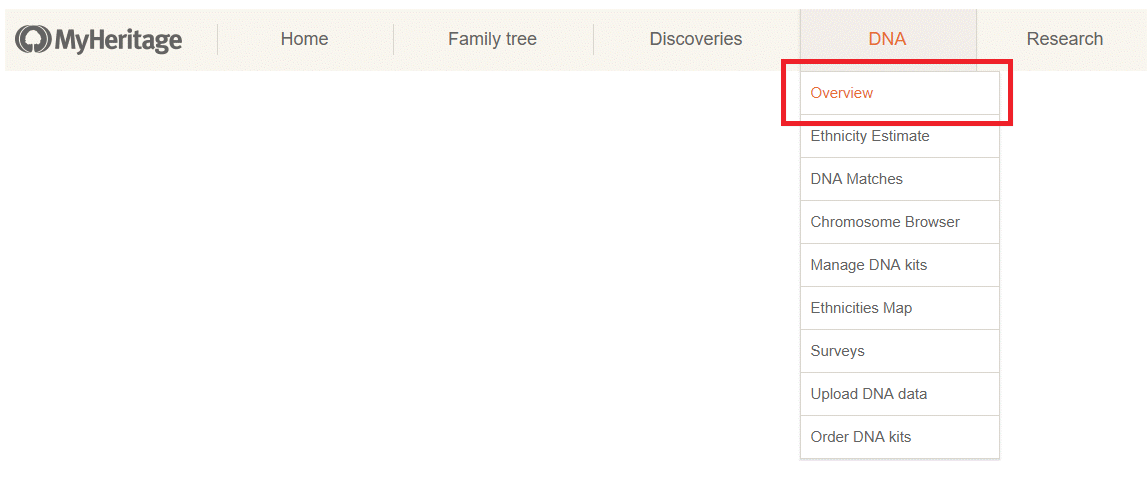
The MyHeritage DNA Location Feature
It is this location feature that will most interest the casual investigator, as well as the serious researcher. This filter lets you see the current location (note: NOT the birth location, though according to the MyHeritage blog post they plan to add birth location in a future update) of your DNA matches. Now, of course, this isn’t an active GPS that is spying on your match, but this tool relies on the location that your match has listed as their location in their MyHeritage account.
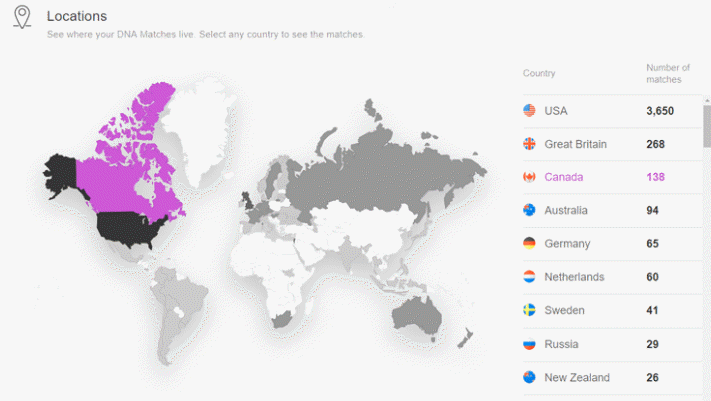
First, it is interesting just to scroll through all of the listed countries and see the variety of locations where your DNA is currently residing. Just think about that for a second: If you are DNA matching with someone in Germany, that means that you are sharing some exact pieces of DNA with someone in Germany and a little bit of you is actually there. This can make for a fascinating exercise when you compare this list of match locations to the locations listed in your ethnicity results. Remember that your ethnicity results can represent your ancestral locations recently, or a very long time ago. So if you see locations on your match list that also appear in your ethnicity results, this might be a good indication that the overlapping location might actually belong in your genealogy. Or the absence of overlap might help you weed out those ethnicities that were thousands of years ago. For example, if you see that your ethnicity results list you as 2% Greek, but you don’t have any DNA matches in Greece, this could mean that your connection to this location is before genealogical time. Of course, it could also mean that the right people from Greece haven’t tested yet, so don’t get too caught up in these deductions.
“If you are DNA matching with someone in Germany,
that means that you are sharing some exact pieces of DNA with someone in Germany
and a little bit of you, is actually there.”
MyHeritage DNA Ethnicities
The last section in the Overview, and the last filter for your match list, shows you how many of your matches are reporting at least 10% of various ethnicities. This might be helpful if you are working your Irish lines, as you can click on Irish, Scottish, and Welsh and see all of your DNA matches who report at least 10% in the Irish, Scottish, and Welsh category.
Combining MyHeritage DNA Filters
Another powerful way to use the filters at MyHeritage is to combine them. On the main match page, you can click on two different filters to further refine your results. So perhaps if you are looking for your Irish ancestor, you might click on the Irish location filter, and then also on the Irish, Scottish, and Welsh ethnicity filter. This will give you all your matches who currently live in Ireland, and who score at least 10% in the Irish, Scottish, and Welsh category.
Of course, the matches that show up after all the filtering aren’t necessarily worth your time or attention. Begin by taking a quick look at how much shared DNA you have. You will want to be sure that you share at least 20 cM before you go spending too much time scouring their pedigree charts for evidence of a shared ancestor.
Likely these filters will continue to improve over time. One thing I would like to see is the ability to use the relationship filter to isolate third cousins, instead of always lumping them with the distant cousins. Most of us don’t have very mysteries in the Extended Family (1st cousins once removed – 2nd cousins once removed) category, so I personally don’t find this filter to be very useful. I would like to see them allow us to filter our best third and fourth cousins out from the rest of our distant matches. Hopefully, MyHeritage can make some refinements in those categories, and thereby make their powerful idea of a two-pronged filter even more effective.
Stay tuned to the Genealogy Gems blog where you will hear updates about MyHeritage DNA (and other DNA testing companies) as they are announced. If you want help in getting more from your DNA test results and using the powerful tools at MyHeritage, my new quick reference guide MyHeritage DNA is available alone or bundled with other DNA resources at the Genealogy Gems store here. Premium eLearning Members can watch the Premium Video Get the Most our of MyHeritage DNA (and download the exclusive handout!) in the Premium Video section here at Genealogy Gems (subscription and sign in required).
What’s your experience using these tools at MyHeritage DNA? Please join the conversation and leave a comment below.

About the Author: Diahan Southard has worked with the Sorenson Molecular Genealogy Foundation, and has been in the genetic genealogy industry since it has been an industry. She holds a degree in Microbiology and her creative side helps her break the science up into delicious bite-sized pieces for you. She’s the author of a full series of DNA guides for genealogists.
Disclosure: This article contains affiliate links and Genealogy Gems will be compensated if you make a purchase after clicking on these links (at no additional cost to you). Thank you for supporting Genealogy Gems!
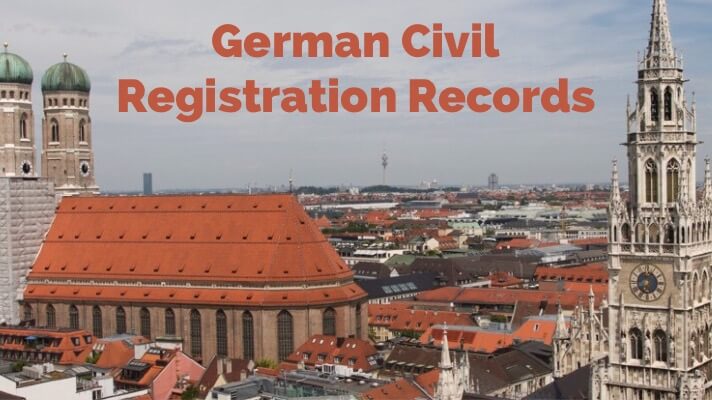
German Civil Registration Records and More Now Online
Now online! German civil registration records for Bad Doberman, Berchtesgaden and Minden, as well as WWII UK prisoners of war records, updates to the 1939 Register, parish records for Cheshire, Cumberland and Derbyshire; British newspapers and Queensland, Australia inquests.
Featured: German civil registration records
Genealogy Giant Ancestry.com has published several new collections of German civil registration records. According to the site, “Beginning on January 1, 1876, birth, marriage and death records in the former German Empire were created by local registry offices. The collected records are arranged chronologically and usually bound together in the form of yearbooks. These are collectively referred to as ‘civil registers.’ Occasionally, alphabetical directories of names were also created. While churches continued to keep traditional records, the State also mandated that the personal or marital status of the entire population be recorded.” Information in each varies.
Explore these German civil registration records by first by going to Ancestry.com here and then in the menu, select Search > Card Catalog > and search for the name of the collection we list below:
For Bad Doberman:
- Bad Doberan, Germany, Military Registers, 1868-1914
- Bad Doberan, Germany, Residence Registers, 1884-1918
For Berchtesgaden:
- Berchtesgaden, Germany, Births, Marriages, and Deaths, 1876-1950
For Minden:
- Minden, Germany, Citizen Lists and Residence Registers, 1845-1902
- Minden, Germany, Births, 1874-1905
- Minden, Germany, Marriages, 1874-1935
- Minden, Germany, Deaths, 1874-1966 and
- Minden, Germany, Military Records, 1783-1856.
UK, Allied Prisoners of War, 1939-1945. “This collection contains information about the soldiers captured, where they were held and often, what happened to them,” states the collection description. “Whilst details vary between sets of records, you may find the following information (where available): name, camp name, nationality, place and date of birth, place and date of death, father’s name, mother’s name, gender, date and place of capture, service (e.g. Army, Air, Navy, Civilian), service rank [and] service number.”
New Genealogy Records at Findmypast
1939 Register Update. For England and Wales: “Over 37,000 ‘closed records’ have been opened up and are now available to search. Search today and find out what your ancestors were doing on the eve of WWII. Discover exactly what they did for a living, maps of where they lived, and even who their neighbors were.”
Cheshire Registers & Records. Explore registers and records from the English county of Cheshire. This collection currently comprises five titles including parish registers, local histories, and funeral certificates.
Cumberland Registers & Records. This collection currently comprises one title: Monumental Inscriptions in the Graveyards of Brigham & Bridekirk, 1666-1876. This title was published in 1878. The preface notes that ‘the whole of these inscriptions were copied with great care, and the same care has been extended to the printing of them.”
Derbyshire Registers & Records. This collection currently comprises one title: The Brave Men of Eyam, 1665-1666. The preface of this title states that the statistics regarding deaths, dates, and some leading incidents are historical, although ‘the object of the book is to tell, in a popular form, the tale of a “mighty woe.”
British newspaper additions! Now at Findmypast is the Oxfordshire Weekly News, covering the years 1869-1895 and 1898-1926. You’ll also find the following added coverage for these papers: Irish Independent (1995-1997, 2000), Belfast Telegraph (1915-1916, 1918-1919) and Liverpool Echo (1987-1988).
Australia, Queensland, Inquests 1859-1897. Discover your ancestor in this index compiled from the inquest files created by the Justice Department for the period 1859 to 1897. Each result will provide you with a transcript including a combination of your ancestor’s name, alias, and inquest year, any additional notes, their file number, reference and item ID.
German family history research help for you
The Genealogy Gems website is packed with German family history research tips and tricks, from this beginner post (where we tackle the question of what “German” even means!) to this helpful explanation of German census records. Click here to explore all our German-related articles. Or: click on the free video right here to learn about finding your German ancestor’s village of origin!

About the Author: Sunny Morton
Sunny is a Contributing Editor at Lisa Louise Cooke’s Genealogy Gems; her voice is often heard on the Genealogy Gems Podcast and Premium Podcasts. She’s known for her expertise on the world’s biggest family history websites (she’s the author of Genealogy Giants: Comparing the 4 Major Websites); writing personal and family histories (she also wrote Story of My Life: A Workbook for Preserving Your Legacy); and sharing her favorite reads for the Genealogy Gems Book Club.
Disclosure: This article contains affiliate links and Genealogy Gems will be compensated if you make a purchase after clicking on these links (at no additional cost to you). Thank you for supporting Genealogy Gems!


